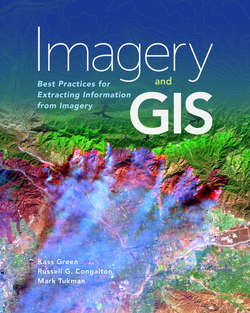Читать книгу Imagery and GIS - Kass Green - Страница 47
На сайте Литреса книга снята с продажи.
Power
ОглавлениеPower refers to the power source that runs the platform. The more powerful the engine or engines, the faster and higher the platform can travel and the greater payload it can carry. Satellites are propelled into space by launch vehicles to escape the earth’s gravity. Afterward, they use electric power derived from solar panels for operation, and stored fuel for orbital maneuvering. Of critical importance is the amount of power remaining after launch for the sensor to operate. Size, weight, and power, coupled with communication bandwidth (the ability to offload the image from the focal plane) are the biggest drivers in satellite sensor design.
Fixed-wing aircraft are powered by piston engines, turbocharged piston engines, turboprops, or jet engines in single- or twin-engine configurations. High-altitude piloted aircraft platforms are usually powered by twin jet engines or turboprops. The high power of these aircraft and their ability to fly at high altitudes with large payloads results in large operational costs, but this can be offset by their broad spatial coverage abilities and fast data collection (Abdullah et al., 2004). Single-engine platforms are lighter and have fewer logistical concerns and lower operational costs, while twin-engine platforms offer more power and weight for larger payloads (Abdullah et al., 2004). Many low-altitude platforms employ a dual sensor configuration for collecting multiple types of data (e.g., lidar and optical), but aircraft with less powerful engines are less likely to be able to carry multiple sensors because the power requirements are too high and the combined payload becomes too heavy for the plane. However, over the last 10 years the weight, size, and power requirements of many sensors have rapidly decreased, making multiple sensor configurations more feasible.
